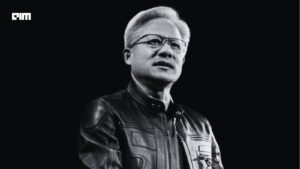Every other day, we see some news about thousands of workers being laid off, and many companies point to the same reason. Artificial intelligence. Amazon cut 14,000 corporate jobs, citing AI-driven efficiency. Accenture eliminated 11,000 positions, blaming AI transformation. Salesforce reduced its workforce by 4,000, highlighting “the benefits and efficiencies” of AI. Even Lufthansa announced plans to cut 4,000 roles by 2030, attributing the decision to “increased use of artificial intelligence.”
The narrative is trendy and AI is the future. Companies must adapt or die. Layoffs are unfortunate but inevitable as machines replace human labor. There’s just one problem with this story, it’s entirely not true.
AI has become corporate America’s favorite scapegoat for decisions driven by pandemic overhiring, economic uncertainty, cost-cutting, and strategic missteps. And it’s working. Investors hear “AI transformation” and nod approvingly. Employees blame technology instead of leadership.
The media runs headlines about the automation apocalypse. Meanwhile, the real reasons for layoffs which are mundane, preventable, and deeply human, get buried under buzzwords.
If AI was actually driving mass layoffs, we’d see evidence of widespread automation replacing human work. We don’t. Research from Challenger, Gray & Christmas shows that of 946,000 job cuts through September 2025, only 3-4% were directly tied to automation or AI. The rest stemmed from restructuring, cost-cutting, and bankruptcies, the same forces that have always driven layoffs.
A study tracking U.S. labor markets since 2022 found limited automation-driven job displacement. Only 1% of service firms reported AI as the reason for layoffs in the past six months. Meanwhile, 35% of companies used AI for employee retraining, and 11% actually hired more workers because of AI adoption.
The Remote Labor Index research from the Center for AI Safety revealed another inconvenient truth. AI systems can successfully handle just 2.5% of remote work tasks end-to-end. Despite breathless claims about AI replacing knowledge workers, current systems struggle with complex, multi-step tasks that require judgment, creativity, and context.
Yet in October 2025 alone, tech companies laid off 33,281 workers(the highest of any sector) while attributing cuts to AI adoption. The math doesn’t add up.
The Real Culprits
The actual reasons for 2025’s layoffs are far more simple than transformative AI. First, pandemic overhiring. Tech companies went on massive hiring sprees during COVID-19, anticipating permanent shifts to digital services and e-commerce. Amazon, for instance, was documented as having “over-hired” with more open positions than approved headcount. When growth normalized and economic conditions shifted, companies faced a bloated workforce they no longer needed.
As Perplexity CEO Aravind Srinivas put it bluntly, “They overhired in the COVID era when they didn’t actually need to, the results of that are being seen now. Correlation doesn’t imply causation. It’s not because of AI that people are losing jobs.”
Second, economic headwinds. Rising interest rates made cheap capital vanish. Consumer spending softened. Corporate spending slowed. Companies that thrived in a low-rate, high-growth environment suddenly faced margin pressure and investor demands for profitability. Layoffs became the fastest way to cut costs and boost earnings.
Third, strategic repositioning. Many companies are shifting resources toward AI development, not because AI is replacing workers, but because AI investments require capital. Meta eliminated 600 positions in its AI division, citing concerns about being “bloated.”
Microsoft conducted three rounds of layoffs while increasing AI spending. This is budget reallocation disguised as transformation.
So why do executives cite AI when the real reasons are overhiring, economic pressure, and poor planning? Because it’s a perfect narrative.
Fabian Stephany, a professor at Oxford Internet Institute, calls it “scapegoating.” Companies can position themselves at the technology frontier, appearing innovative and forward-thinking, while concealing embarrassing truths about misjudgments made during the pandemic boom. “They can now attribute it to AI” instead of admitting to miscalculations from two or three years ago, Stephany explained.
AI also shifts blame away from management. Saying “we overhired during the pandemic and made strategic errors” reflects poorly on leadership. Saying “we’re adopting cutting-edge AI to remain competitive” sounds visionary. Investors reward the latter narrative with higher stock prices. Employees can’t organize against an algorithm the way they can against a CEO. And the media amplifies the automation story because it’s more compelling than “company corrects past hiring mistakes.”
Amazon’s messaging illustrates the contradiction perfectly. CEO Andy Jassy signaled in June that AI would reduce the workforce. But when layoffs came in October, he clarified they were “not even really AI-driven, not right now,” attributing cuts instead to bureaucratic bloat. The inconsistency reveals the gap between AI rhetoric and reality.
The Cost
This scapegoating fuels public anxiety about AI-driven unemployment that isn’t materializing at the scale claimed. It misdirects policy conversations away from actual labor market challenges toward automation fears that may be premature.
It also lets executives off the hook for genuine failures in workforce planning. Companies that recklessly overhired during the pandemic, then conducted mass layoffs when conditions changed, deserve scrutiny for poor management, not credit for visionary AI adoption.
Most damaging, it creates worker distrust of AI itself. If employees believe AI means job loss, even when layoffs stem from other causes, they’ll resist adoption, slowing legitimate productivity gains that could actually improve work.
AI will reshape work. Over time, it will automate certain tasks, augment others, and create new roles we can’t yet imagine. Goldman Sachs projects clients will cut headcount by 4% in the next year due to AI, rising to 11% over three years. Those are real, measurable impacts.
But 2025’s layoff wave isn’t that story. It’s a correction of pandemic-era excesses, dressed up in AI language to sound strategic. The sooner we acknowledge that, and hold management accountable for decisions they’re blaming on algorithms, the sooner we can have honest conversations about AI’s actual impact on work and what policies might help workers navigate real automation when it arrives. AI didn’t fire those workers. Management did.










